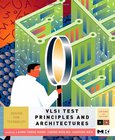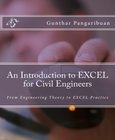Engineering Economics and Economic Design for Process Engineers

Book Details:
| Publisher: | CRC Press |
| Series: | CRC Press |
| Author: | Thane Brown |
| Edition: | 1 |
| ISBN-10: | 0849382122 |
| ISBN-13: | 9780849382123 |
| Pages: | 368 |
| Published: | Oct 27 2006 |
| Posted: | Mar 01 2015 |
| Language: | English |
| Book format: | |
| Book size: | 5.48 MB |
Book Description:
Engineers often find themselves tasked with the difficult challenge of developing a design that is both technically and economically feasible. A sharply focused, how-to book, Engineering Economics and Economic Design for Process Engineers provides the tools and methods to resolve design and economic issues. It helps you integrate technical and economic decision making, creating more profit and growth for your organization. The book puts methods that are simple, fast, and inexpensive within easy reach. Author Thane Brown sets the stage by explaining the engineers role in the creation of economically feasible projects. He discusses the basic economics of projects - how they are funded, what kinds of investments they require, how revenues, expenses, profits, and risks are interrelated, and how cash flows into and out of a company. In the engineering economics section of the book, Brown covers topics such as present and future values, annuities, interest rates, inflation, and inflation indices. He details how to create order-of-magnitude and study grade estimates for the investments in a project and how to make study grade production cost estimates. Against this backdrop, Brown explores a unique scheme for producing an Economic Design. He demonstrates how using the Economic Design Model brings increased economic thinking and rigor into the early parts of design, the time in a projects life when its cost structure is being set and when the engineers impact on profit is greatest. The model emphasizes three powerful new tools that help you create a comprehensive design option list. When the model is used early in a project, it can drastically lower both capital and production costs. The books uniquely industrial focus presents topics as they would happen in a real work situation. It shows you how to combine technical and economic decision making to create economically optimum designs and increase your impact on profit and growth, and, therefore, your importance to your organization. Using these time-tested techniques, you can design processes that cost less to build and operate, and improve your companys profit.
Download Link:
Related Books:
Sockets, Shellcode, Porting & Coding
Reverse Engineering Exploits and Tool Coding for Security Professionals
The book is logically divided into 5 main categories with each category representing a major skill set required by most security professionals:1. Coding - The ability to program and script is quickly becoming a mainstream requirement for just about everyone in the security industry. This section covers the basics in coding complemented with a slue of programming tips and tricks in C/C++, Java, Perl and NASL. 2. Sockets - The technology that allows programs and scripts to communicate over a network is sockets. Even though the theory remains the same - communication over TCP and UDP, sockets are implemented differently in nearly ever language. 3. Shellcode - Shellcode, commonly defined as bytecode converted from Assembly, is utilized to execute command...
VLSI Test Principles and Architectures
Design for Testability
This book is a comprehensive guide to new DFT methods that will show the readers how to design a testable and quality product, drive down test cost, improve product quality and yield, and speed up time-to-market and time-to-volume. Most up-to-date coverage of design for testability. Coverage of industry practices commonly found in commercial DFT tools but not discussed in other books. Numerous, practical examples in each chapter illustrating basic VLSI test principles and DFT architectures. Lecture slides and exercise solutions for all chapters are now available. Instructors are also eligible for downloading PPT slide files and MSWORD solutions files from the manual website....
An Introduction to Excel for Civil Engineers
From Engineering Theory to Excel Practice
It's a Excel basics book that every civil engineer should have read by now. It addresses skills that may not be covered in most Excel for civil engineering texts, such as step by step guides to create an application program and how to convert the steps into VBA code, how to perform matrix operations (multiplication and inversion) using Excel-VBA, macro for creating an engineering chart, a brief and simple guide to become an instant Excel-VBA programmer, and more... Also to be presented the depiction in AutoCAD program. Yes! AutoCAD is chosen because one of its advantages that relies on high drawing accuracy. You will learn how to create a simple AutoCAD script file using Excel formulas and Excel-VBA. It is expected that you will be able to create sim...
2007 - 2021 © eBooks-IT.org



